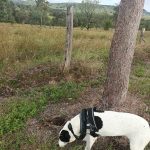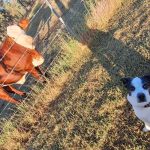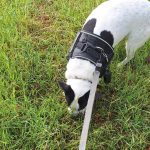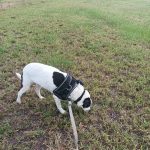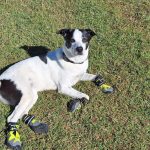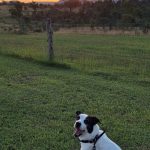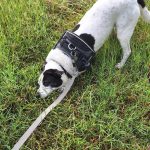Travelling with pets (dogs)
Who did we have with us
Travelling with pets (dogs) – We started our journey with my two 15 year old puppies. We had them with us on the road for about a year before their time with us had ended. I have not included their photos in this post.
My daughter’s dog Bella came for an extended holiday while they were travelling themselves. Bella loved life on the farm with cows, a horse, possums and kangaroos, and so many people.
My youngest daughter also visited with her baby, George.
I am really looking forward to getting another dog, as soon as i find the right baby for me to adopt.
The basics
Comfort and safety.
It is important for your dog to feel comfortable and safe when they travel to new locations.
Take them for a walk to orientate them with the new smells of the area.
Be aware of the climate in the area you are travelling. Different breeds react differently to heat and cold.
Be prepared. If you are travelling to an area which might not have very good phone reception, download the details of local vets, just in case. We all know the one time you are not prepared, is the one time that something will happen. I did stumble across this page which i though was pretty great. It is called VetChat where you can have a video call to a trained professional to discuss your pets concerns. At the time of writing, the capped price for the consult was $59.
Wildlife.
Every new location brings about the risk of new wildlife in the area.
Please be wary of cane toads and crocodiles in the north of Australia.
You can find more information about various types of wildlife on our wildlife page which you can find HERE.
Remote travel.
If your dog is fussy, or has a special diet, make sure you take an extra stash of food when travelling through remote areas.
Remote areas will have restricted supplies and restricted hours of operation. Think ahead and be prepare for the worst to happen. Will your fur baby be ok if you were to have a mechanical problem with your vehicle and it will take a week to get the part to where you are?
Forward thinking
If your dog is one that requires regular grooming, you may need to plan ahead. When we were travelling through one region, i called a few of the local dog groomers. The average wait time for the next available appointment was going to be 6 weeks! Remote locations do not have the staffing availability that cities have.
Unless you are visiting larger cities regularly, it is definitely recommended to work out roughly how long it will take you to get to your next location and book in advance (or learn how to groom and carry supplies).
If you do book ahead, be sure to check the cancellation policy. You don’t want to be unexpectedly caught out and have to pay for the groom that circumstances didn’t allow you to attend.
National Park rules
The purpose of national parks is to provide a much-needed refuge for native plants and animals. While dogs and other pets may be a valued part of a family, they’re a real threat to our native animals.
They can:
- scare or stress native animals with their presence or scent
- chase wildlife and disturb the peace and quiet for other visitors
- introduce disease and increase the spread of weeds.
This is why dogs, cats, and all other domestic pets—including caged birds—aren’t allowed. On-the-spot fines apply if you are found to have pets with you in a national park.
Travelling with pets (dogs) in a vehicle through a national park
You can travel through a national park with your dog in a vehicle but only on gazetted roads.The dog must stay inside the vehicle and you must stay on the gazetted roads. You can’t travel on any non-gazetted (management) roads in the park and you can’t stop at day-use areas, lookouts or any other sites.
Provisions for traversing recreation areas are different for each area (the website mentioned is Queensland). Check the individual web pages for these areas for details.
This section was taken directly from the Department of Environment, Science and Innovation page: https://parks.desi.qld.gov.au/before-you-visit/dogs-and-pets
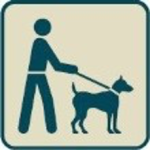
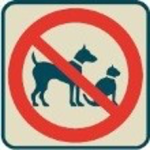
So where can i take my dog then?
Some State Forests and Conservation Parks.
Council website generally contain information about areas where either dogs are allowed, or where they are not allowed. Be sure to check council websites before travelling. Parks and Wildlife for each state will generally contain similar information. If in doubt, call into the information centre as you enter a new town.
Transportation when travelling with pets (dogs).
Thousands of dogs are injured each year while travelling in the back of utes because they aren’t properly restrained.
Under the Animal Care and Protection Act 2001 (Qld) you have a legal obligation to make sure your dog is safe when travelling:
- inside a vehicle
- on a vehicle tray or trailer.
You must not transport a dog inside a vehicle if any part of the dog, other than its head, can protrude from the vehicle. A maximum penalty of $9,288.00 applies.
If you are transporting a dog on the tray of a vehicle or on a trailer, the dog must be secured to stop it from:
- falling off the tray or trailer
- moving off the tray or trailer
- being injured by the movement of the vehicle or trailer.
A maximum penalty of $9,288.00 applies.
Provide shelter for your dog to avoid heat stress by:
- covering metal floors—utes and tray backs made of metal can heat up quickly and burn your dog’s paws
- giving your dog water to prevent dehydration during long, hot journeys
- providing a cover over the back of the tray for shelter
- providing extra shelter when travelling in very dusty conditions to prevent dust particles harming your dog’s eyes, ears, nose and lungs.
You are legally required to make sure your dog is safe, secure and comfortable when travelling inside a vehicle or on a vehicle tray or trailer. It is illegal for you to drive a vehicle with an animal on your lap.
This information was taken from the following Queensland Government website:
Transporting Dogs in Vehicles, 2023. Queensland Government. Retrieved 2 June 2024, from, https://www.business.qld.gov.au/industries/farms-fishing-forestry/agriculture/animal/move/guidelines/dogs.
XXXXX
XXXXXX
XXX
We are still working to populate this page
What do you need?
Hiking: It is not only people that need first aid, dogs need it too. Plan ahead for the area you are visiting. Will there be a potential of snakes on the tracks? What about other wild animals, what first aid will you need for the area you are visiting?
Even if your dog is the best dog in the world, always have a lead and collar available and be prepared to be able to restrain your dog if needed.
Water, treats (or snakcs) and heat protection are items to consider.
As with hiking without your pets, always tell someone where you are going and when to expect you back, and be sure to download maps for the area prior to taking off.
Transit:
- seatbelt
- collar/harness (depending on the seatbelt)
- lead
- water bowl and water
- snacks
I know some people who have sedated their pets for transport, please don’t do this. If your dog is drowsy, you will find it harder to tell if something is wrong. Just do your best to keep them safe and comfortable and they will be fine.
Day-to-day:
- collar with an AirTag
- lead
- poopy bags
- water bowl and water
- shampoo and brush
- bowls
- food
- toys
- treats
- common sense
You know your dog better than anyone. If your dog takes medications, make sure you pack ample. If you dog suffers allergies, make sure you protect them for the source of the allergy, the same as if you were at home.
Packing: If it is going to be hot, pack items such as cooling mats and extra water.
If it is going to be cold, you might want to pack jumpers/jackets and a hot water bottle.
Things we regularly pack:
- Cage to keep her safe (One area we were told there were Dingo around).
- A cover for the cage, helps her feel safe and helps protect her from weather (even though the cage is in the annex).
- Bed for her to feel safe while resting.
- Adjustable leads for different scenarios.
- Harness, just in case.
- Toys.
- Boots to keep her feet safe if there are bindi, prickles, hot ground, rubbish including glass etc.
- Treats ( she loves my pumpkin home made treats – see below).
- Barking collar – it can zap, vibrate or make a noise (it rarely gets past making a noise stage).
- Seatbelt for safe travel.
- Metal chain so she can stay outside safely and enjoy the fresh air and sunshine.
- AirTag, just in case we do happen to loose her, we can find her quickly and easily.
- Muzzle, haven’t needed it, but would rather have one ready if i did need it.
- Tick and fleas treatment, speaks for itself.
- Shampoo and a brush to help rub it in (man, she loves a good scratch).
- Poop bags and a holder for the lead.
- A small packet of puppy pads, just in case.
- Jumper and/or jacket, depending where you are travelling and the impending weather.
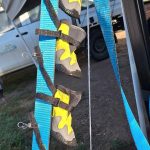

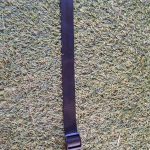
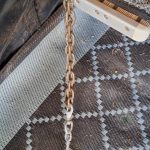

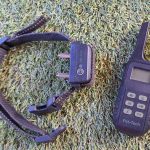


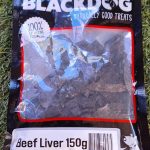
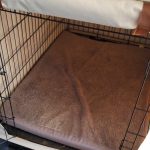
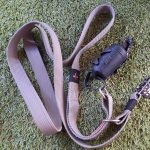


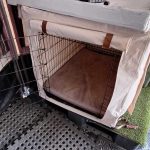

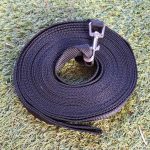
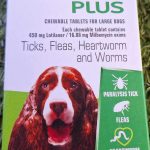



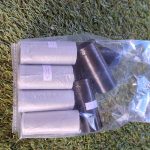
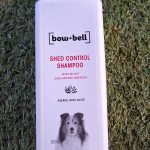
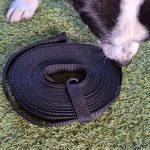
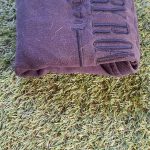


Homemade treats
Bella has a bit of a sensitive stomach, so i made her homemade treats which is just LOVES.
INGREDIENTS
- 3 cups old-fashioned oats
- 2 eggs
- 1 cup pure pumpkin purée
INSTRUCTIONS
- Preheat oven to 180°C
- Add oats to the bowl of a food processor.
- Let machine run for 2 – 3 minutes, until oats are almost flour consistency with a few big pieces left.
- Add pumpkin purée and eggs, mix to combine until dough looks uniform.
- Scoop with small cookie scoop and drop on a parchment (or silpat)-lined sheet pan.
- Flatten with a fork dipped in flour.
- Bake for 16 – 18 minutes, rotating halfway through.
- Cool completely before giving to your dog.
XXX
We are still working to populate this page


